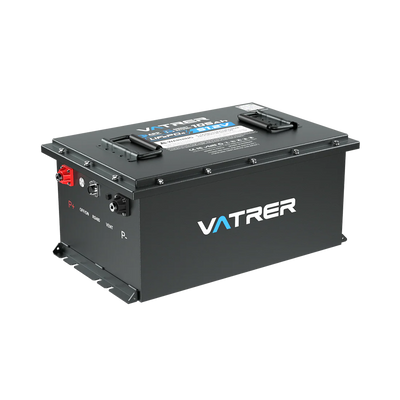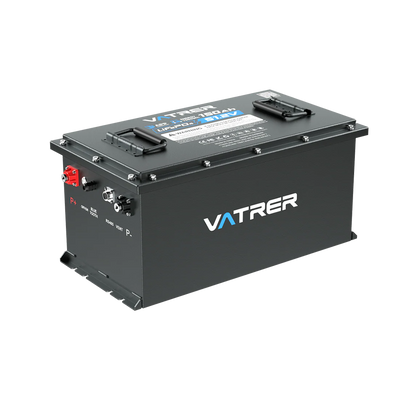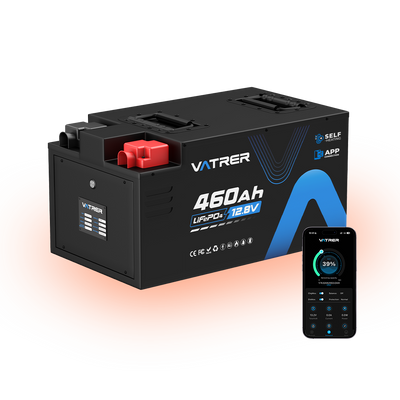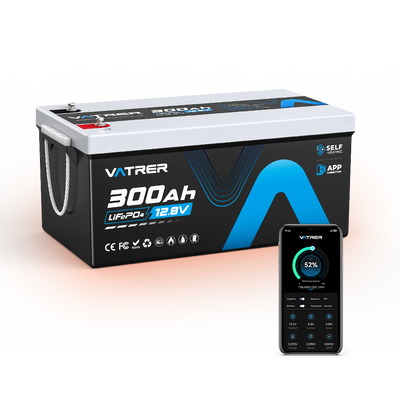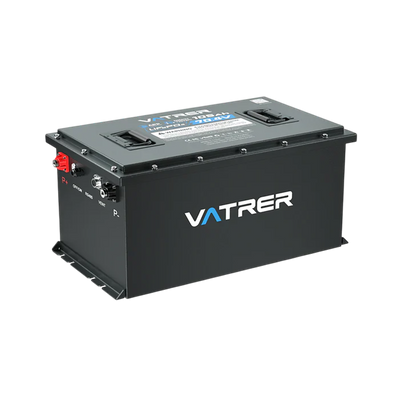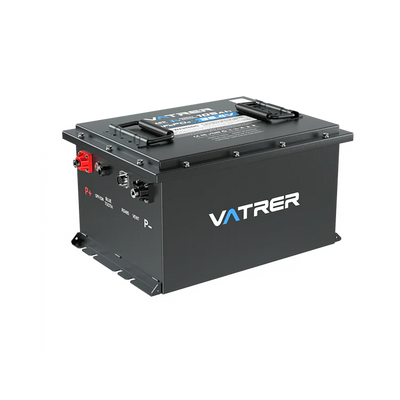
How to Size Your Off-Grid Solar Batteries: A Comprehensive Guide
Are you considering going off-grid with your solar power system? Sizing a solar battery bank for an off-grid solar system is a critical step to ensure reliable energy storage and a consistent power supply. This guide walks you through the process of calculating the right solar battery size, helping you make informed decisions to maximize the efficiency of your solar power system.
In this comprehensive guide, we will walk you through the steps to accurately size your off-grid solar batteries, enabling you to make informed decisions and maximize the efficiency of your solar power system. Let's dive in!
Understanding Solar Battery Sizing Basics
The right battery capacity ensures your off-grid solar system can meet your daily energy needs while ensuring reliable energy storage and a continuous power supply. A properly sized battery pack balances cost, performance, and energy independence.
Here are the key battery terms you need to understand:
- Kilowatt-hour (kWh): A measure of energy used or stored, essential for quantifying daily energy consumption and battery storage capacity.
- Depth of Discharge (DoD): The percentage of a battery's capacity safely used before recharging. Lithium-ion batteries offer 80-90% DoD, compared to 50% for lead-acid batteries. Maintaining DoD at 80% can extend cycle life compared to 90% deeper discharges, balancing usability and longevity.
- Battery Capacity: The total energy a battery can store, expressed in kWh or ampere-hours (Ah), determining how long it can power your home without solar input.
Incorrect sizing can result in insufficient power during outages or unnecessary costs from oversized batteries. This guide provides a clear approach to calculate your solar battery bank accurately.
Step 1: Calculate Your Daily Energy Consumption
To size your solar battery system, determine your daily energy consumption in kilowatt-hours (kWh). List all appliances and devices you plan to power, noting their wattage and daily usage hours. For example, a small household might include:
| Appliance | Wattage (W) | Hours/Day | Energy (Wh/Day) |
|---|---|---|---|
| Refrigerator | 200 | 24 | 4,800 |
| LED Lights | 50 | 5 | 250 |
| Laptop | 60 | 4 | 240 |
| Total | 5,290 Wh (5.29 kWh) |
Review historical energy bills to account for seasonal variations, such as increased HVAC use in summer.
For seasonal peaks, calculate electricity usage during peak usage months, such as summer HVAC peak usage months, to ensure reliable power year-round.
For larger homes or remote setups, daily energy may range from 15-20 kWh.
Use the Vatrer battery online calculator or consult one of our experts for an exact estimate.
Step 2: Assess Solar Array and Sunlight Availability
Your solar panel system generates electricity to charge your battery bank. Evaluate average daily sunlight hours in your location, typically 4-6 hours, using solar insolation data or online tools.
During cloudy days, solar output may drop by 50-70%, assume 2-3 hours of effective sunlight for conservative sizing. For a 6.6 kW solar array with 4 sunlight hours, daily production is:
Daily Solar Production = Solar Array Capacity (6.6 kW) × Sunlight Hours (4) = 26.4 kWh
Ensure panels are optimally placed south-facing with minimal shading to maximize production, as suboptimal placement can reduce output by 10-20%.
For a 10 kWh daily load, a 6.6 kW solar system producing ~20-26 kWh daily requires a solar battery bank to store excess energy for nighttime or low-sunlight periods.
Step 3: Determine Desired Autonomy Level
Autonomy is the number of days your battery system can supply power without solar input.
For off-grid homes, 2-3 days of autonomy is typical, while remote locations with prolonged cloudy periods or limited winter sunlight may need 5-7 days.
Lithium-ion's 80-90% DoD allows more usable energy per kWh compared to lead-acid's 50% DoD, reducing the number of batteries needed.
For a 10 kWh daily energy consumption and 2 days of autonomy:
Required Energy Storage = Daily Energy (10 kWh) × Autonomy (2 days) = 20 kWh
Depending on your battery life needs, you can choose to purchase a Vatrer 51.2V 200Ah wall-mounted energy storage battery, which can provide you with 10.24kWh of usable energy per unit. If you need more capacity, our solar battery supports up to 30 devices connected in parallel, providing a maximum of 307.2KWh of usable energy.
Step 4: Calculate Solar Battery Bank Capacity
To calculate the required battery capacity, multiply your daily energy consumption (in kWh) by the desired autonomy time. Use the formula:
Battery Capacity (kWh) = (Daily Energy Consumption × Days of Autonomy) / DoD
For a 10 kWh daily load, 2 days of autonomy, and a lithium-ion battery with 80% DoD:
Battery Capacity = (10 kWh × 2) / 0.8 = 25 kWh
Convert to ampere-hours (Ah) for a 48V system, common for off-grid setups:
Battery Capacity (Ah) = (25 kWh × 1,000) / 48V = 520.83 Ah
To meet 520.83 Ah with 48V 100 Ah lithium solar batteries, you need approximately 6 batteries (520.83 ÷ 100 ≈ 5.21).
This capacity supports a 10 kWh daily load with a 6.6 kW solar system producing ~20-26 kWh daily, covering deficits during low sunlight.
If you are looking for a high-quality battery pack for your home off-grid solar system, explore the Vatrer 48V lithium battery or home solar battery designed for off-grid applications to provide you with a continuous and stable power supply.
Step 5: Account for System Efficiency and Losses
System components introduce efficiency losses. Choose MPPT charge controllers optimized for lithium-ion batteries (95-98% efficiency) and inverters (85-95% efficiency). Assume an overall system efficiency of 85%.
Account for losses from wiring, temperature, and battery self-discharge (1-3% per month for lithium-ion), totaling approximately 5-10%. Adjust the capacity:
Adjusted Battery Capacity (Ah) = 520.83 Ah / (0.85 × 0.9) = 681.09 Ah
Therefore, it is recommended that after obtaining the required battery capacity size through the above steps, if you originally need to purchase 6 100Ah batteries, you can reserve at least 20% of the capacity for use, that is, purchase 7 100Ah batteries. This ensures your battery system handles real-world conditions, such as cloudy days or high temperatures.
Step 6: Choose the Right Battery Type for Your Solar System
Choose the battery technology that best suits your needs, such as lead-acid, lithium-ion, or other advanced battery chemistries. Consider factors such as cost, cycle life, depth of discharge, maintenance requirements, and environmental impact.
| Battery Type | Cycle Life | DoD | Maintenance | Cost per kWh |
|---|---|---|---|---|
| Lithium-ion (LiFePO4) | 3,000-5,000 cycles | 80-90% | Minimal | Higher upfront, lower long-term |
| Lead-acid | 500-1,000 cycles | 50% | Regular (fluid checks) | Lower upfront, higher maintenance |
LiFePO4 solar batteries are widely used due to their thermal stability and safety compared to other lithium-ion chemistries, such as NMC, which reduces the risk of fire in off-grid environments. Their battery management system (BMS) monitors battery temperature and state of charge in real time to ensure safety and longevity.
Step 7: Optimize for Off-Grid Challenges
Using an off-grid system requires careful planning for energy independence. Key considerations include:
- Cloudy Days and Backup: Size your battery bank for 2-3 days of low sunlight. Integrate a backup generator for prolonged outages.
- Load Shifting: Prioritize essential loads such as refrigeration during low solar input, using stored energy efficiently to maximize battery use.
- Monitoring: Use smart apps compatible with lithium battery systems, providing alerts for low battery levels or system faults for proactive maintenance.
Conclusion
By accurately assessing your energy consumption, sunlight availability, desired autonomy level and considering efficiency losses, you can determine the appropriate battery capacity and technology for your off-grid solar system. Remember to consult with solar energy professionals or battery experts to ensure your sizing calculations are accurate and aligned with your specific requirements. Enjoy the benefits of a well-sized off-grid solar power system, providing sustainable and reliable energy for your needs.
For a high-quality solution, consider Vatrer batteries. Vatrer 12V and 48V LiFePO4 batteries, with capacities from 5 kWh to 20 kWh, are compatible with most off-grid inverters and offer modular scalability for growing energy needs. Build your reliable off-grid solar system today!
Share












































































